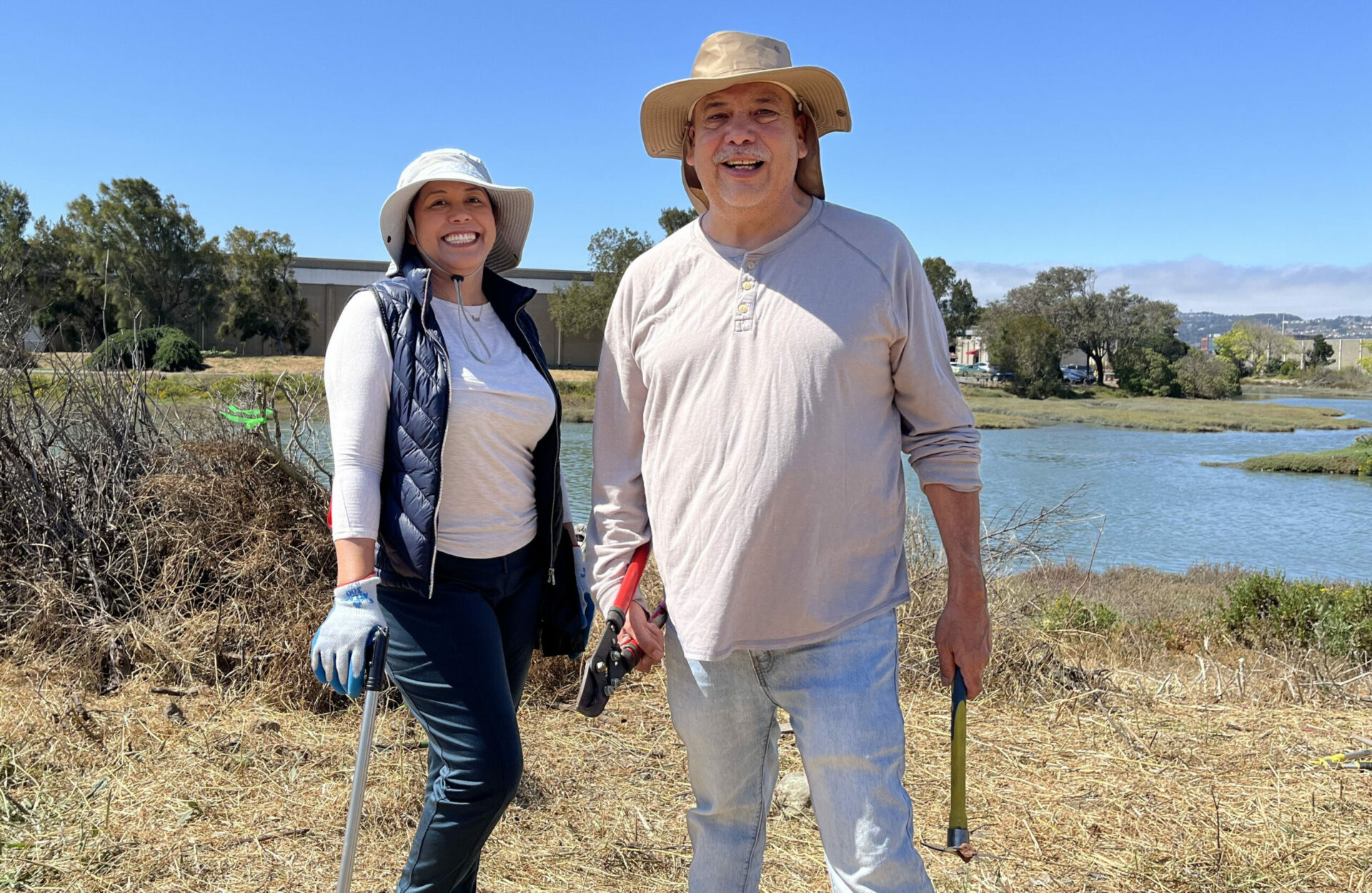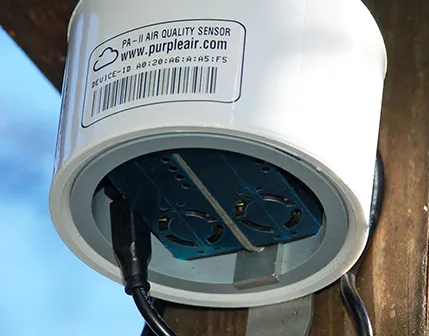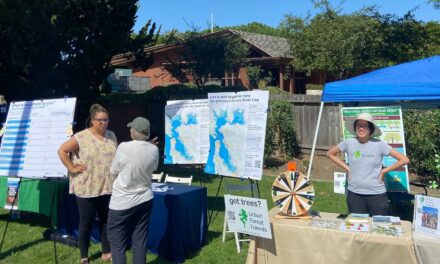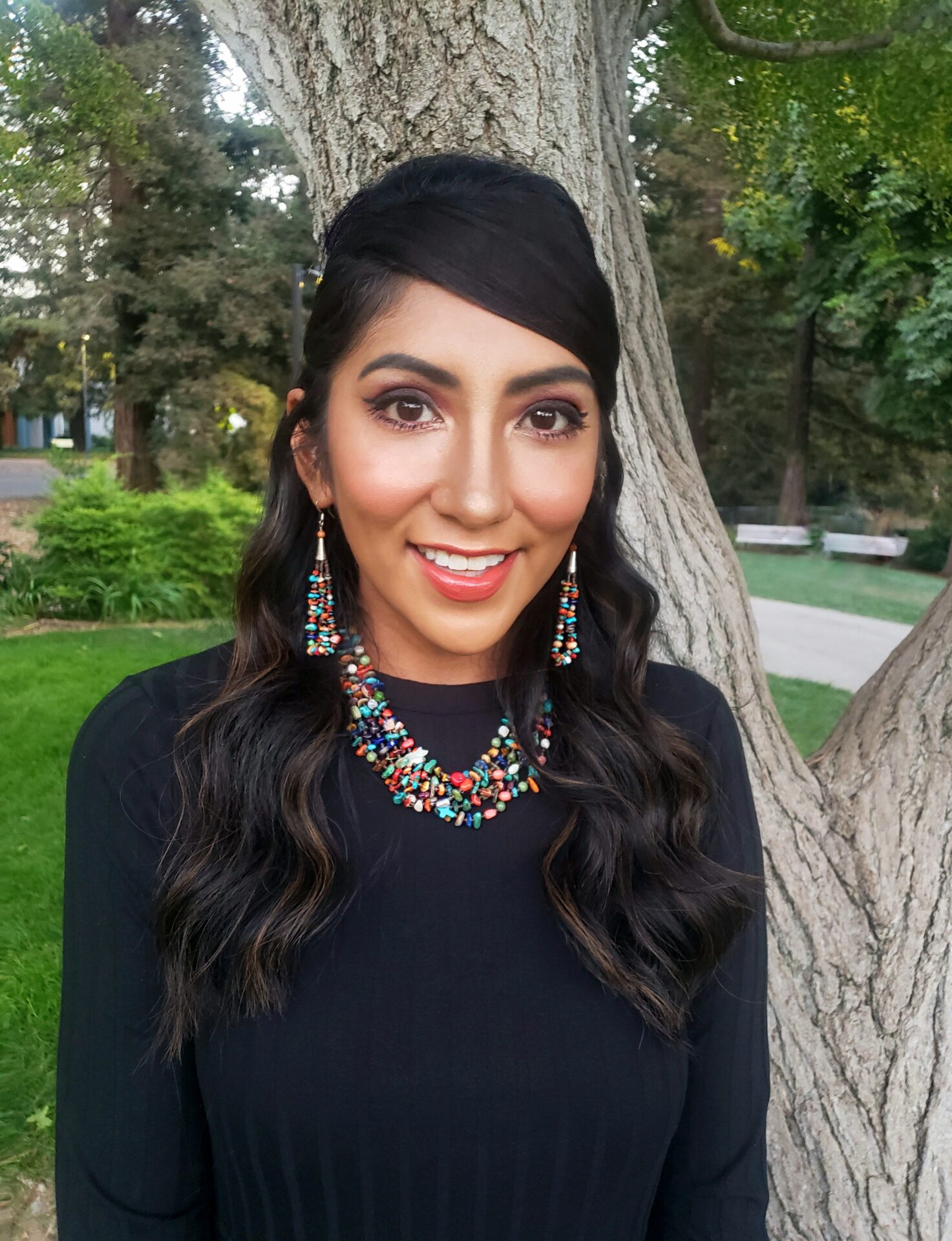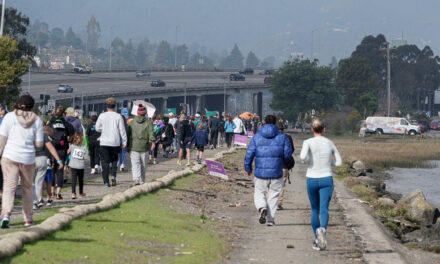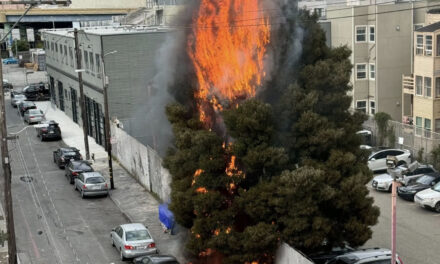South City Trapped by Freeways But Rising
Francesca Pedraza found the role she wanted to play in life when she was acting for a community theater in Redwood City. What drew her was not the acting itself, but the impact she could have on an audience. As a member of the group Young Latino Leaders, she performed for Latinx communities in the rural areas of the Bay Area to bring awareness about issues affecting her community. Back then, in those plays in the nineties, the issue was smoking; now, after she traded acting for directing a local nonprofit, it’s environmental justice.
“It was really cool to see how a community comes together to learn about something that is affecting them, but they don’t realize it’s affecting them [because] it’s not right in their backyard,” she says. “It was definitely a calling.”
Three years ago, Pedraza reunited with her mentor, Julio García, who used to direct the plays in which she acted thirty years ago. Together, they created Rise South City, an organization committed to raising awareness about climate change and environmental justice in the frontline communities in South San Francisco and San Bruno. “We wanted the communities of north San Mateo County to have a seat at the table and for their voices to be heard,” says Pedraza.
Last year, with funding from the California Air Resources Board and the Bay Area Air Quality Management District, Pedraza and Garcia began a project to monitor the air quality in South San Francisco, a city crossed by three major highways and next to one of the busiest airports in the United States.
With the help of researchers from UC Berkeley, UC Davis, and Stanford, they have been installing house monitors to collect data about air quality. They focused on the predominantly Latinx community living on the east side of South San Francisco, trying to understand the relationship between pollutants and the respiratory issues some residents are facing.
“Whenever we talk with the community, we discover more asthma cases,” Julio Garcia says in Spanish. “There are no studies yet, but we are seeing it.”
Other Recent Posts
Testing Adaptation Limits: Mariposa Trails, Marin Roads & San Francisco Greenspace
In KneeDeep’s new column, The Practice, we daylight how designers, engineers and planners are helping communities adapt to a changing climate.
ReaderBoard
Once a month we share reader announcements: jobs, events, reports, and more.
Boxes of Mud Could Tell a Hopeful Sediment Story
Scientists are testing whether dredged sediment placed in nearby shallows can help our wetlands keep pace with rising seas. Tiny tracers may reveal the answer.
“I Invite Everyone To Be a Scientist”
Plant tissue culture can help endangered species adapt to climate change. Amateur plant biologist Jasmine Neal’s community lab could make this tech more accessible.
How To Explain Extreme Weather Without the Fear Factor
Fear-based messaging about extreme weather can backfire. Here are some simple metaphors to explain climate change.
The World Health Organization estimates that 4.2 million people around the world die each year from causes related to air pollution. Heart disease, stroke, chronic obstructive pulmonary disease, lung cancer, and acute respiratory infections are among the most common illnesses. In the Bay Area, researchers have found that around 2,500 deaths and 5,590 new childhood asthma cases can be attributed to traffic pollutants produced by cars, airplanes, and local industry. Another study, published in 2021, found that neighborhoods with a higher share of Latinx and Black populations are more exposed to polluted air and more likely to develop diseases related to poor air quality.
“The Bay Area is still racially segregated. And pollution is unjustly distributed,” Joshua Apte, one of the leading scientists of this study, commented on X.
Installing the air quality monitors in the neighborhoods of South San Francisco was not easy. At first, the monitors were frequently disconnected and couldn’t record accurate information. Sometimes, it was due to the households’ low WiFi connectivity; other monitors were disconnected by people who feared that they might increase their electric bill.
After a year of collecting data, Rise South City’s monitors have found that two-thirds of South San Francisco breathes air that exceeds the WHO’s air quality threshold and that low-income families are the most affected. Francesca Pedraza and Julio Garcia are working to deploy more monitors and secure the funding to install ones that work with solar power. For the moment, they have given air purifiers to those most affected and are installing more monitors on September 20.
“Often, cities, states, and city council members don’t want to see the truth,” Pedraza says. “We are hoping that with this data, we can make some policy changes and stop building so many freeways that affect the communities.”
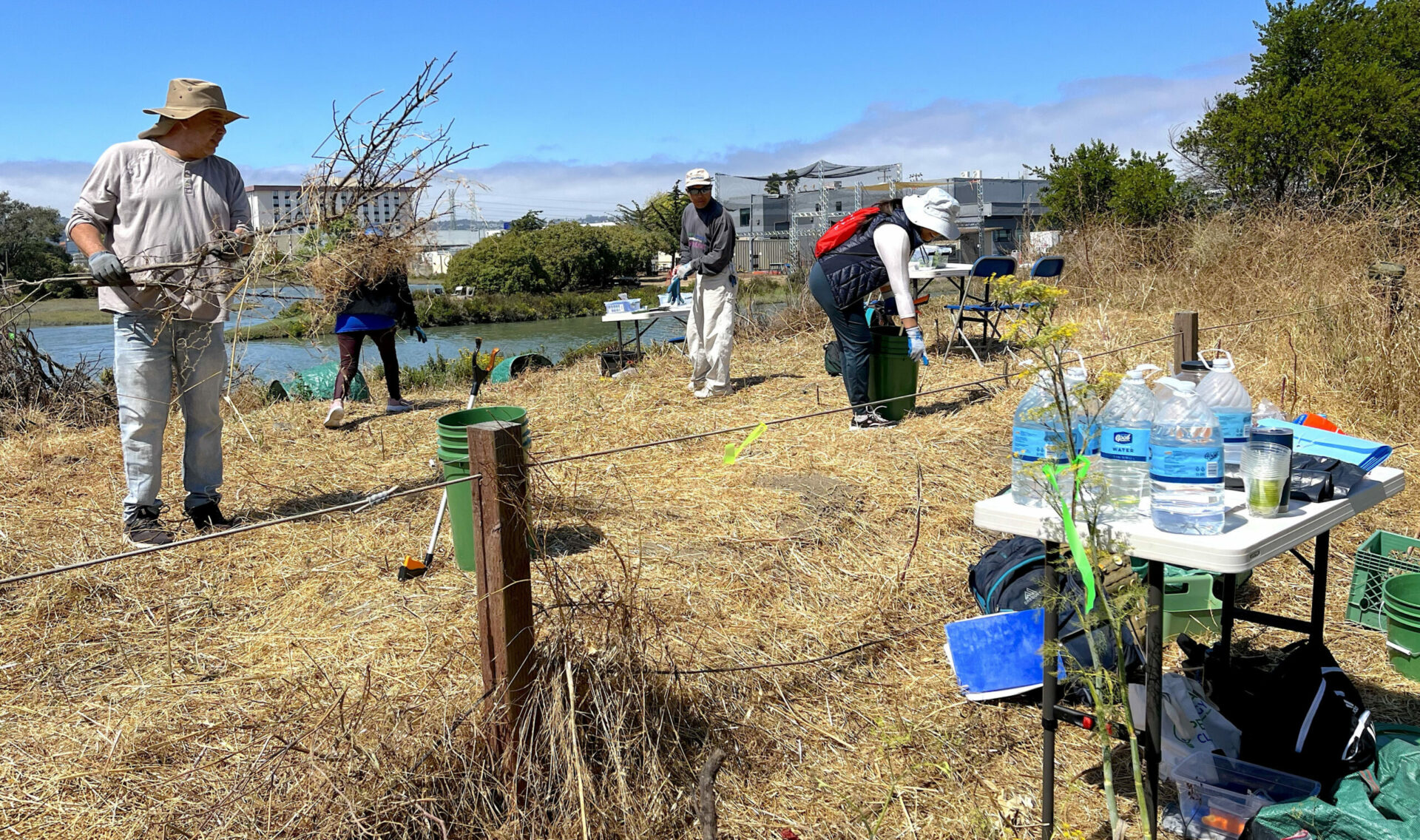
Neighbors help clear trash from their local creek. Photo: Juan Pablo Pérez-Burgos
In addition to the air quality project, Rise South City is working with the grassroots organization San Bruno Mountain Watch on a project to clean Colma Creek, which flows from the coastal Crocker Hills to the Bay through Daly City, Colma, and South San Francisco. Four Saturdays a year, they gather volunteers from the surrounding neighborhoods to pick up chip bags, candy wrappers, plastic caps, and worn-out clothes from the creek’s shoreline marsh that runs along the San Francisco Bay Trail.
They also pull out invasive plants to replace them with native vegetation.
“As Latinos, we tend to only worry about work, about bringing food to our families,” says Julio Garcia in Spanish. “That’s why we need to bring the community to these projects, to bring awareness about environmental issues. When you include the community, they reclaim ownership of what’s surrounding them and start taking care of it.”






